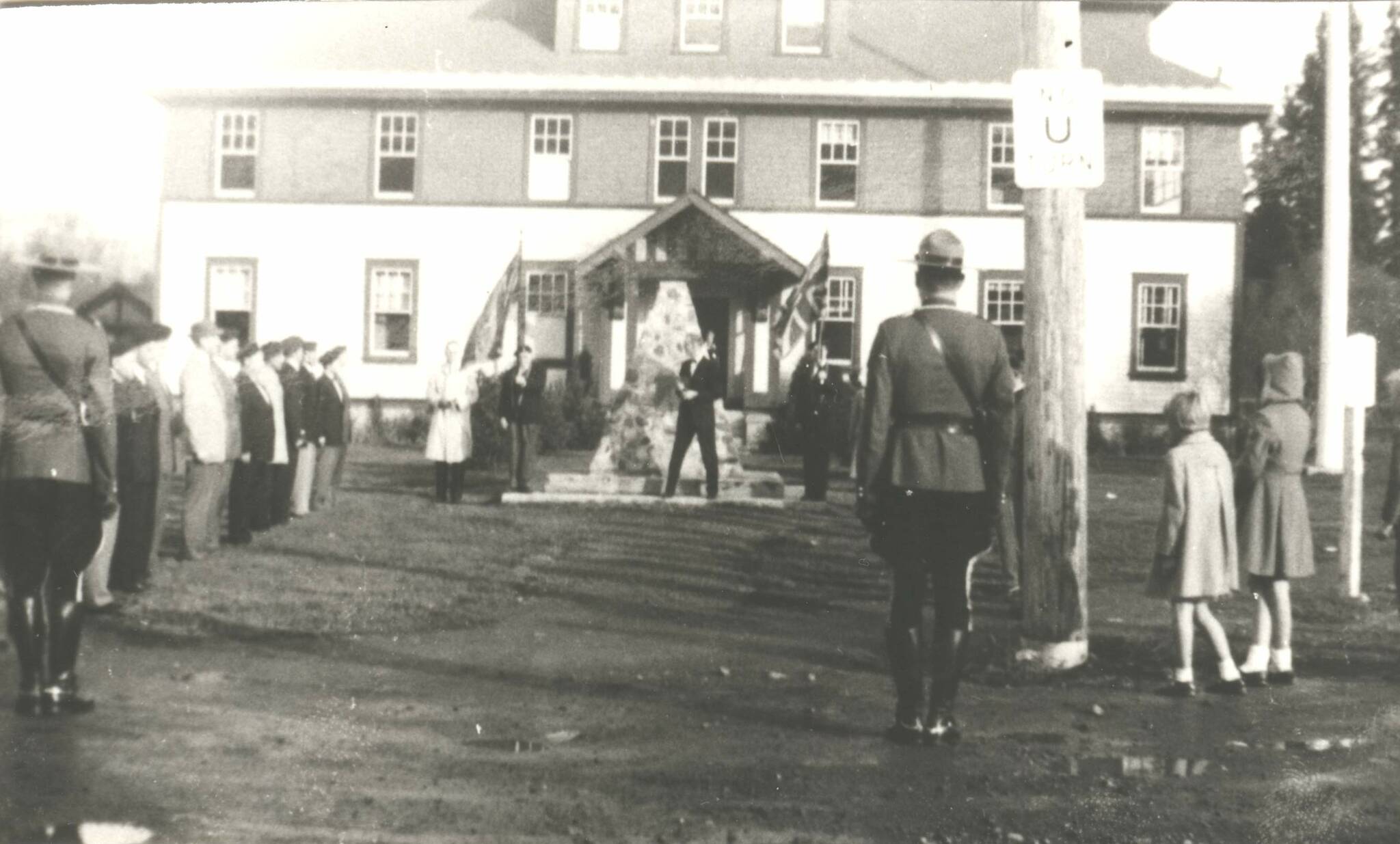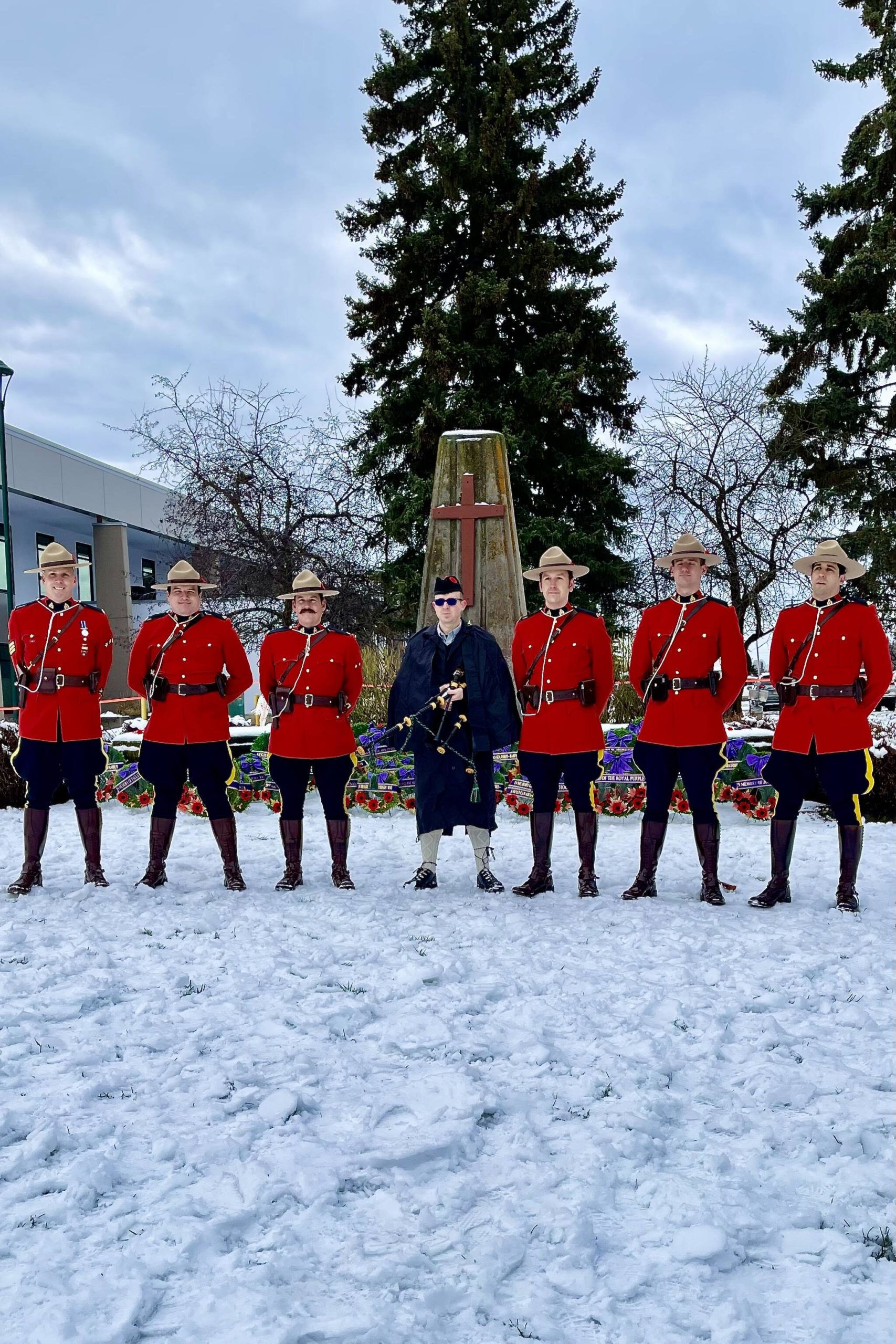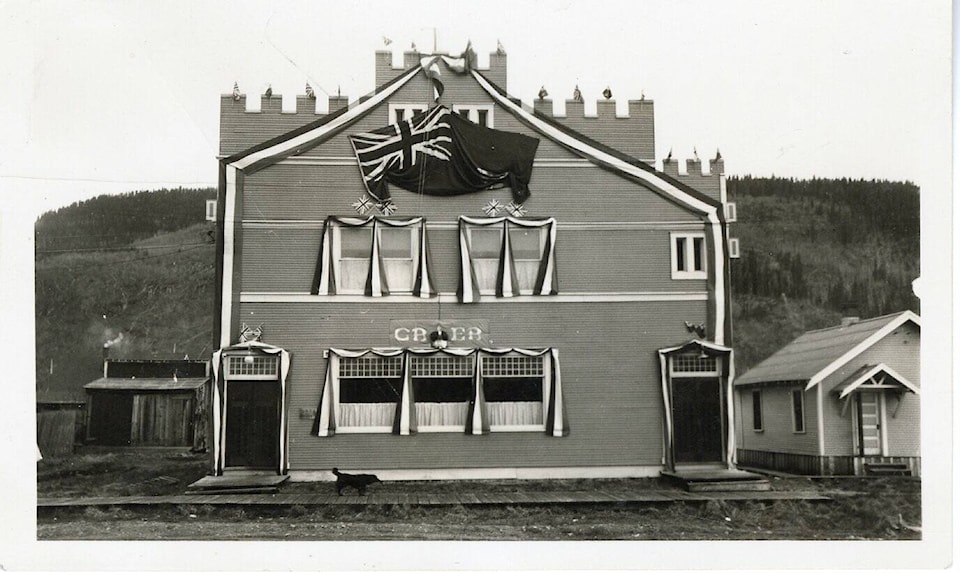Remembrance Day was first observed in Canada, and throughout the British Commonwealth in 1919. It was originally called “Armistice Day,” to commemorate the armistice agreement that had ended the First World War at 11 a.m. on November 11th, 1918 – the eleventh hour, of the eleventh day, of the eleventh month.
Following demobilization of the army and the return of soldiers to their home communities in 1918 and 1919, local branches of veterans associations began to form throughout Canada. In Smithers, a branch of the Great War Veterans Association (GWVA) was formed in August 1919.
By 1924 the local GWVA branch had secured property and a building for their association hall on Broadway Avenue between Main and Queen Streets.
On the first ever Armistice Day in November 1919, the local GWVA branch began a long-standing tradition of marking November 11th with an Armistice Day Dance to benefit the GWVA, returned soldiers, and widows of servicemen who did not return. These dances continued to be held by the GWVA, and later the Legion, until the mid-1950s.
From 1921-1930 Armistice Day in Canada was held on the Monday of the week that November 11 fell, and so was not always marked on the 11th itself.
For many years there was a conflict with Canadian Thanksgiving, the date of which changed annually through a declaration of Parliament. From 1921-1930, Thanksgiving Day and Armistice Day were usually held on the same Monday in November.
This became increasingly upsetting to veterans, who felt that a holiday, and a day commemorating the war dead should not overlap. Quoting from the Cowichan Leader newspaper, a November 5, 1930 editorial in the Smithers Interior News conveyed this sentiment, stating: “Thanksgiving is a holiday; Armistice is a holy day. It is unfortunate that there should ever have been a thought to make the two days coincide. One does not deliberately set out to make one’s wedding day coincide with the anniversary of the death of some loved one.”
The issue was finally resolved in 1931, when the Government of Canada passed the Armistice Day Amendment Act. This bill, introduced by B.C. independent MP A.W. Neill officially fixed Armistice Day, which was to be called “Remembrance Day,” on November 11.
Thanksgiving Day went back to being declared annually by the federal government until 1957, when it was officially set as the second Monday in October.
In Smithers, Remembrance Day continued to be marked by the annual benefit dance, as well as special services at local churches. Branch 63, the local Smithers branch of the Canadian Legion of the British Empire Service League, later called the Royal Canadian Legion, was formed in 1926, and over time members of the GWVA (which numbered 160 in 1926) joined that organization. The Legion took over organizing the annual local Remembrance Day events, including the annual dance, in 1927.
In the 1930s and 1940s, the United Church appears to have been the primary church associated with Remembrance Day events. Veterans were usually invited to march in uniform from the Canadian Legion hall to the United Church.
Cenotaph services in Smithers began in 1958. According to a March 1957 Interior News story, permission to build a cenotaph at the provincial government building (today the Central Park Building) had been granted in 1955, and in March 1957 a committee within the Legion was appointed to oversee the project.
Through local fundraising by the Legion, the cenotaph was built in July 1958. The cenotaph was officially dedicated in a ceremony on October 19th 1958, and the first Remembrance Day wreath laying occurred on November 11 of that year.
The current Smithers cenotaph was constructed in 1971. With the provincial government building relocating to the opposite end of Main Street there was also a desire to move the cenotaph to what was then known as Alfred Park.
The local Dutch Canadian Committee, under leadership of then-chairman Joe Kinderdyk, completed significant fundraising for the construction of the new cenotaph in recognition of the service men and women of the valley, and in remembrance of Canada’s role in the liberation of the Netherlands at the end of the Second World War.
The first ceremony at the new cenotaph was November 11, 1971.
The cenotaph was rededicated in 1992 following a change of the parade route to the park, and the addition of the Korean War plaque. In 1995 the Legion requested that the town change the name of the park to “Veterans Peace Park.” The official name change, and the newly added archway were dedicated on July 29, 1995.
They shall grow not old, as we that are left grow old;
Age shall not weary them, nor the years condemn.
At the going down of the sun and in the morning
We will remember them.”
– Act of Remembrance, excerpt from “For the Fallen” by Lawrence Binyon
Article courtesy of the Bulkley Valley Museum


